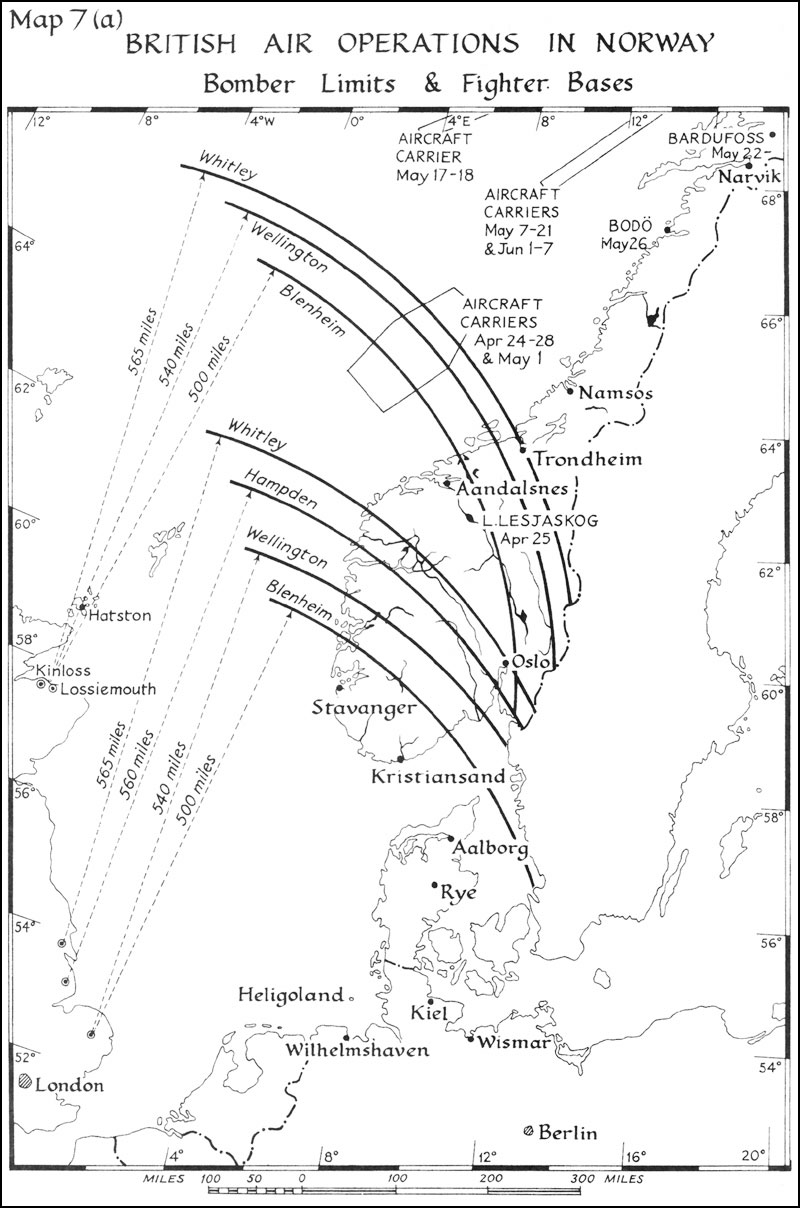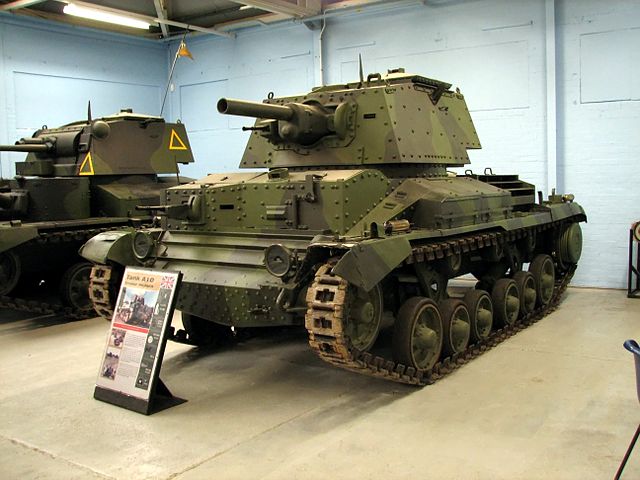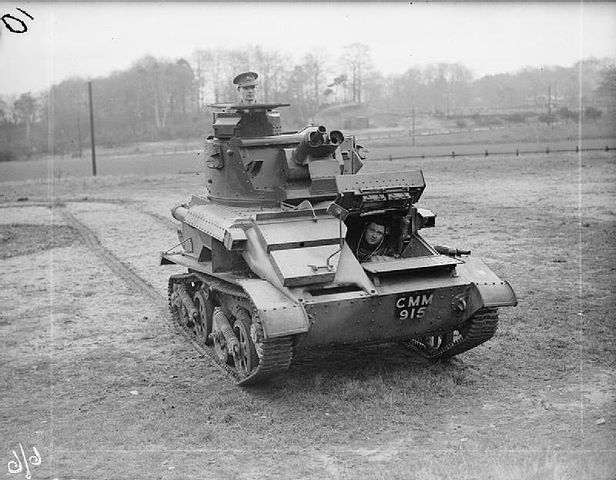9
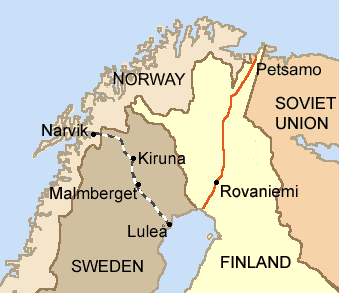
Viewing the Finnish all year port of Petsamo as too vulnerable to a Soviet assault The Western Allies (Fr-Br) or WA decide to seize North Norway (Nordland, Troms and Finnmark) in breach of Norwegian neutrality. The calculation is that the seizure will be defensible from any Norwegian and/or German counter as long as the railway south out of the region can be destroyed in the initial landings.

If Sweden refuses military transit, existing road routes to the north of Sweden shall be employed to lay logistic lorry route and then a rail route from Narvik into Finland via Troms. The existing rail route from the ports near Bodo south can be used to feed into a defence line and prefabricated air strips. The existing Hattfjelldal Airfield will have wooden planks flown in (plus Sandnessjøen, Bodø, Narvik and Harstad will be given a steel grid deck as they are accessable from the coast). It is thought that ?? and Mo i Rana could also support an air base.
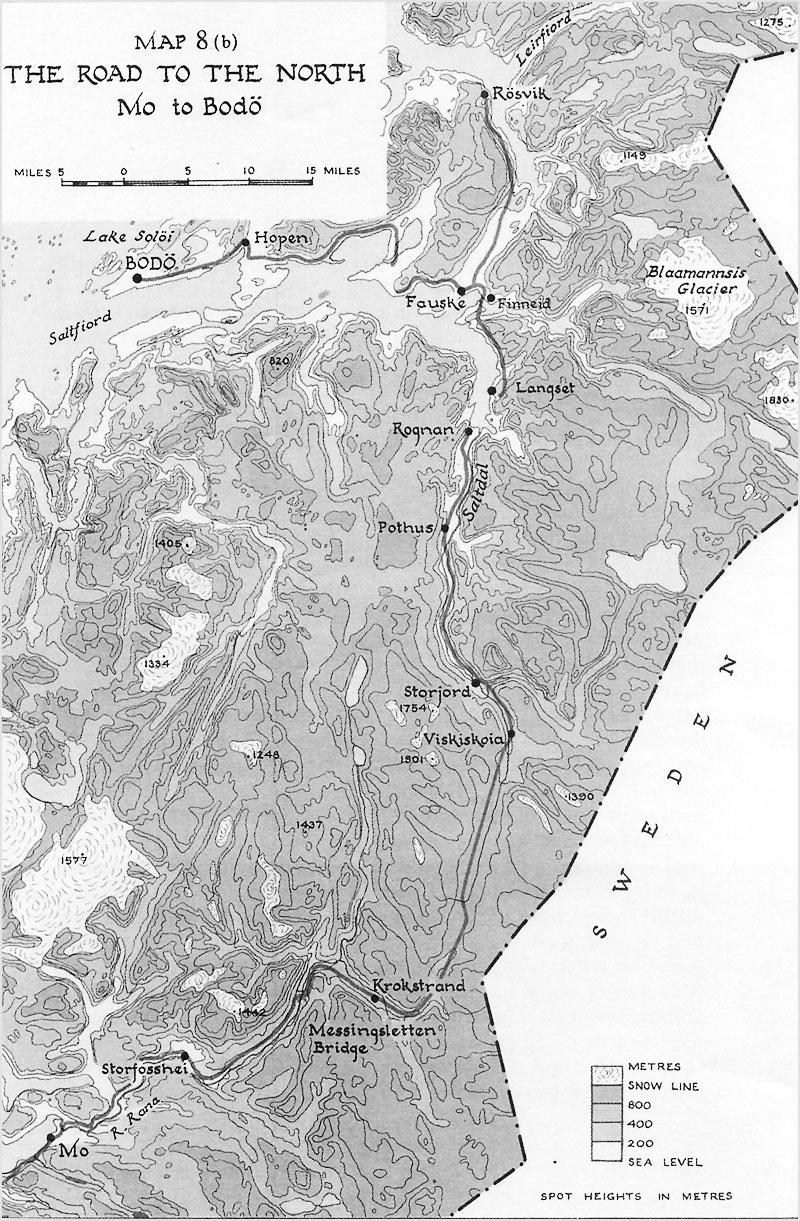
Norway narrows to a front 15 miles across west of Rosvik, with 10 miles of that above the snow line.
There is some legal precident for forced access where transit is refused and this is a good oportunity to constrain KM U-boat activities from both coasts of the North Sea. It is also felt strategically useful to limit German imports of Swedish iron ore through the all year port of Narvik.
Should forces attempt to by-pass the narrow front of defence in the south of Nordland through Sweden then this offers a golden opportuity to also force the north of Sweden with all the high volume iron ore mines. Then the existing rail line from Narvik to Lulea could also be employed to support Finland against Germany's ally.
Either way an initial campaign in northern Finland should seek to seize the Kola peninsula to secure Petsamo as another logistic port. Vadso in Finnmark will be a useful starting off point and logistic base for the northern arm of such a campaign alongside Petsamo.
To improve the international credentials of the venture the Polish Indepentent Highland Brigade and the Canadians shall make up part of the initial forces.

Viewing the Finnish all year port of Petsamo as too vulnerable to a Soviet assault The Western Allies (Fr-Br) or WA decide to seize North Norway (Nordland, Troms and Finnmark) in breach of Norwegian neutrality. The calculation is that the seizure will be defensible from any Norwegian and/or German counter as long as the railway south out of the region can be destroyed in the initial landings.

If Sweden refuses military transit, existing road routes to the north of Sweden shall be employed to lay logistic lorry route and then a rail route from Narvik into Finland via Troms. The existing rail route from the ports near Bodo south can be used to feed into a defence line and prefabricated air strips. The existing Hattfjelldal Airfield will have wooden planks flown in (plus Sandnessjøen, Bodø, Narvik and Harstad will be given a steel grid deck as they are accessable from the coast). It is thought that ?? and Mo i Rana could also support an air base.

Norway narrows to a front 15 miles across west of Rosvik, with 10 miles of that above the snow line.
There is some legal precident for forced access where transit is refused and this is a good oportunity to constrain KM U-boat activities from both coasts of the North Sea. It is also felt strategically useful to limit German imports of Swedish iron ore through the all year port of Narvik.
Should forces attempt to by-pass the narrow front of defence in the south of Nordland through Sweden then this offers a golden opportuity to also force the north of Sweden with all the high volume iron ore mines. Then the existing rail line from Narvik to Lulea could also be employed to support Finland against Germany's ally.
Either way an initial campaign in northern Finland should seek to seize the Kola peninsula to secure Petsamo as another logistic port. Vadso in Finnmark will be a useful starting off point and logistic base for the northern arm of such a campaign alongside Petsamo.
To improve the international credentials of the venture the Polish Indepentent Highland Brigade and the Canadians shall make up part of the initial forces.
Last edited:
